StuffSwap
Fall 2012
I worked with a team of two other students on StuffSwap, a semester-long group project for the Human-Computer Interaction Studio course I took at Cornell. It was also the winner of the BOOM 2013 eBay innovator's award.
StuffSwap is a platform that connects outgoing and incoming tenants in Collegetown, the student neighborhood bordering Cornell's campus. The application allows outgoing tenants to upload items that he or she would like to leave for future tenants and allows incoming tenants to reject or accept the items offered by the outgoing tenants.
The Client
My team's client was a post-doctoral research fellow at Cornell whose academic goal was to study IT use and design in relation to environmental and human sustainability. She wanted us to design and build an IT-based tool/service that can support ordinary families and individuals in Ithaca in living more sustainably.
The Problem
Due to storage constraints, students in Collegetown often throw out items in good condition when moving out of an apartment at the end of the school year and buy the same items at the beginning of the following school year. StuffSwap eliminates this unnecessary waste by saving outgoing tenants the effort of discarding items at the end of the school year and allows incoming tenants to know exactly what items they can expect when they move into their new apartment. The application saves both parties money while making sustainable decisions.
The Process
Competition Analysis, Photo Study, and Directed Storytelling
First, we performed a competition analysis to understand the effectiveness of different approaches to change people's behavior. We identified several strategies that are undertaken in both the domain of sustainability and in other areas to inspire us in our design.
We asked undergraduate student participants to take pictures of when they were consciously doing something that they deemed sustainable over a 24-hour period. Among all the participants, we discovered that "convenience" and "benefit to me" influence whether students make sustainable choices.
Based on the results of photo study, we conducted follow-up interviews with each participant by using a directed storytelling method.

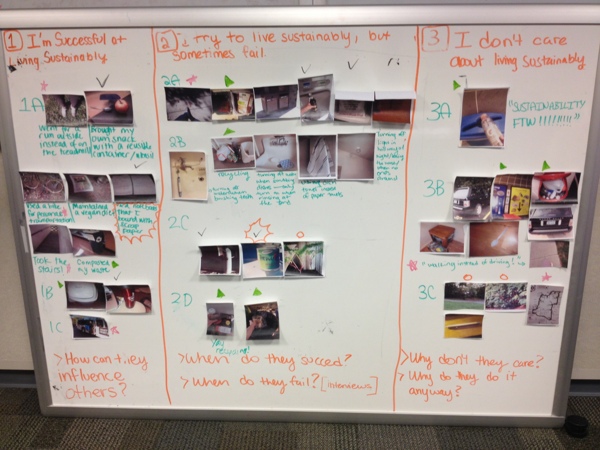
Brainstorming
Based on our findings, we came up with about 100 ideas and then found common themes among them. We narrowed down and selected the most promising one based on our client's feedback, trying to make a sustainable choice more convenient and beneficial.

Personas
We came up with archetypical personas of Cornell students and landlords to gain feedback from our client, professor and classmates.

Storyboarding
We drew a storyboard depicting the issue that we were trying to solve: to eliminate the disconnect between outgoing and incoming tenants at Cornell so that they can reuse items.

Card Sorting
To initially test the idea with our target users, we used the card sorting method. Our team asked participants to imagine it was the end of the school year and to use sticky notes to label the items that people would want to leave behind. We then took pictures of these items and printed them out. Using these images, we conducted a card sorting task to discover what kinds of items future tenants would be willing to accept from former tenants.
Our team also asked what kinds items our participants wished an outgoing tenant would leave behind for them as they moved into their new apartment. We synthesized our findings in the Venn diagram below.
During this step, we also interviewed a landlord who owned properties in Collegetown. She thought we had a promising solution to the waste she sees year after year.
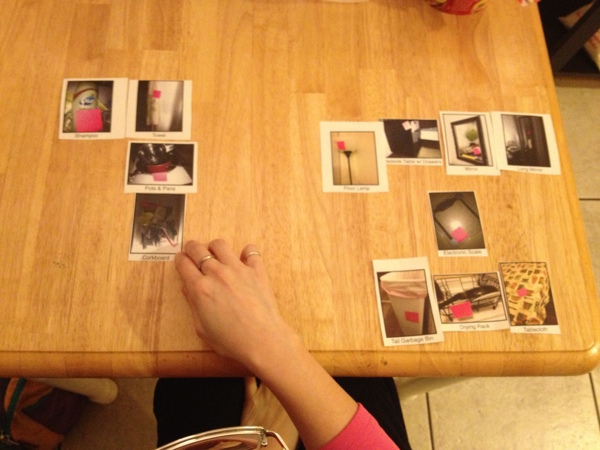
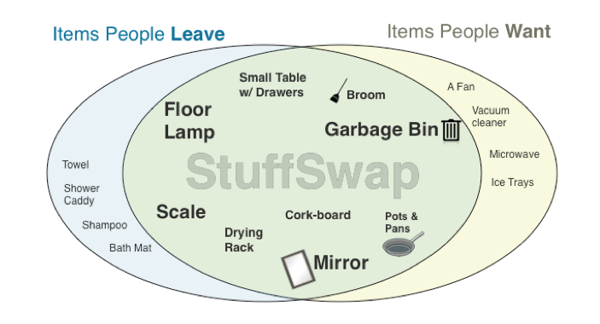
Low-Fidelity Prototype
We initially designed StuffSwap as a web application at this initial low-fidelity prototype stage. We used our professor as a subject and asked him to perform specific tasks. Based on these results, we realized that it would be easier for tenants to take pictures on their phones, and we therefore decided to make StuffSwap a mobile application for incoming and outgoing tenants. For landlords, we chose to make a web-based version since it would be easier for landlords to landlords to enter written details with a full-size screen.


Medium-Fidelity Prototype
During this step, we implemented medium-fidelity prototype mobile version of StuffSwap for tenants and a web version for landlords.

User Interface for Outgoing Tenants. The mobile platform allows outgoing tenants to take and upload pictures more easily as they are moving around the house.

User interface for Landlords. The web platform allows landlords to enter tenants' details more easily.
Final Version
We refined the medium-fidelity prototype for the final version in terms of its visual design, ensuring that each screen adhered to a grid layout.

Login Screen
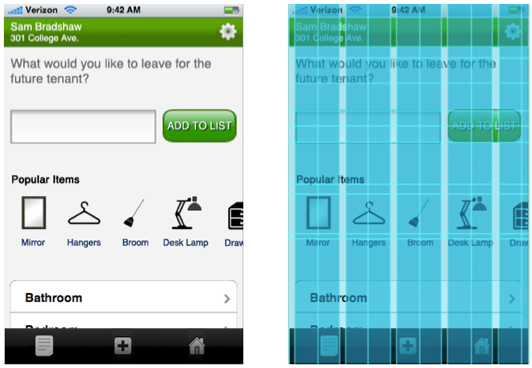


User Interface for Outgoing Tenants

User Interface for Incoming Tenants
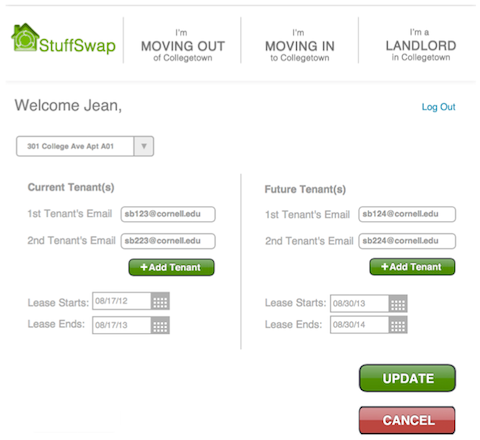
User Interface for Landlords
Website
In addition to our prototype, we created a mockup of a website for StuffSwap, inspired by the websites of Square and WhatsApp. This website allows visitors to discover how their specific needs can be catered by the StuffSwap system.

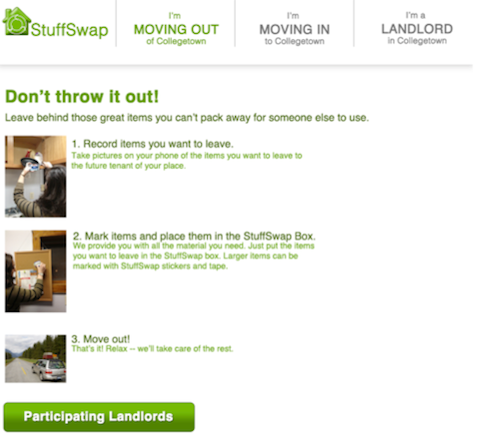


Future Steps
StuffSwap was a successful exploratory project in the field of sustainable HCI. We received positive feedback from Collegetown residents, the landlord we interviewed, our professor, and our client.
We brainstormed several means of financing the operation. Our team looked into registering StuffSwap as a non-profit organization and soliciting donations. We also researched selling carbon credits by calculating the exact amount of carbon dioxide that would be saved per item by reusing it rather than recycling it or throwing it away.

